Dear Zazie, Here is today’s Lovers’ Chronicle from Mac Tag dedicated to his muse. Follow us on twitter @cowboycoleridge. Rhett
The Lover’s Chronicle
Dear Muse,
© copyright 2022 mac tag/cowboy coleridge all rights reserved
© copyright 2021 mac tag/cowboy coleridge all rights reserved
hey, come here
lets git out
a bottle of wine,
turn off all the lights
and light the candles
from the Hôtel Costes
we will lay on the bed,
listen to the wind blow
and talk of all we will be
……
the days here swing
from intoxicatin’
to bitter tonic
at least we are past
when they were poison
is the present
predetermined
by the past
a helluava lottta pain
was laid upon the doorstep
is there any comin’ back
from too much time spent payin’
for what cannot be paid
© copyright 2019 mac tag/cowboy coleridge all rights reserved
just ahead
of a snowstorm,
we reach the hotel
and go up to your room
we take off our jackets and boots
and git out a bottle of wine
we turn off all the lights
and light the candles
from the Hôtel Costes
the musk tinged
scent fills the room
neither of us speak
we sit there on the bed
sippin’ and listenin’
to the wind blow
you lean back
against the headboard
i can tell from the look
in your eyes
what you want
to happen next
you reach over, strokin’
the back of my head
twistin’ my long hair
in your fingers
i put down my glass
and pull you close…
later spent and sated,
an understandin’
this was not just makin’ love
but an affirmation,
an exorcism of pain
© copyright 2017 mac tag/cowboy Coleridge all rights reserved
| Sidonie-Gabrielle Colette | |
|---|---|
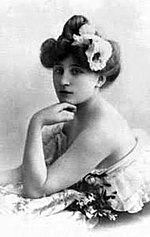 |
|
Today is the birthday of Colette (Saint-Sauveur-en-Puisaye, Yonne; Sidonie-Gabrielle Colette, 28 January 1873 – 3 August 1954 Paris); novelist nominated for the Nobel Prize in Literature in 1948. Perhaps her best known work, the novella Gigi (1944), was the basis for the film and Lerner and Loewe stage production of the same name. She was also a mime, an actress and a journalist.
In 1893 she married Henry Gauthier-Villars (1859–1931) or ‘Willy’, his nom-de-plume, an author and publisher. Her first four novels, the four Claudine stories, Claudine à l’école (1900), Claudine à Paris (1901), Claudine en menage (1902), and Claudine s’en va (1903), appeared under his name.
Willy, fourteen years older than his wife and one of the most notorious libertines in Paris, introduced Colette into avant-garde intellectual and artistic circles while engaging in sexual affairs and encouraging her own lesbian dalliances. It was he who chose the titillating subject-matter of the Claudine novels, the girls’ school or convent ruled by a seductive female teacher. Colette later said that she would never have become a writer if not for Willy.
Colette and Willy separated in 1906, although it was not until 1910 that the divorce became final. She had no access to the sizable earnings of the Claudine books—the copyright belonged to Willy—and until 1912 she followed a stage career in music halls across France, sometimes playing Claudine in sketches from her own novels, earning barely enough to survive. This period of her life is recalled in La Vagabonde (1910), which deals with women’s independence in a male society, a theme to which she would regularly return in future works. During these years she embarked on a series of relationships with other women, notably with Mathilde de Morny, Marquise de Belbeuf (“Missy”), with whom she sometimes shared the stage. On January 3, 1907, an onstage kiss between Missy and Colette in a pantomime entitled Rêve d’Égypte caused a near-riot, and as a result they were no longer able to live together openly, although their relationship continued for another five years.
In 1912 she married Henry de Jouvenel, the editor of Le Matin. During the war she devoted herself to journalism, but marriage allowed her to devote her time to writing.
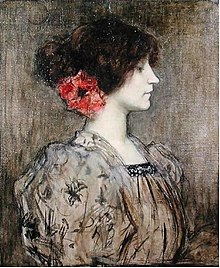
In 1920 Colette published Chéri, portraying love between an older woman and a much younger man. Chéri is the lover of Léa, a wealthy courtesan; Léa is devastated when Chéri marries a girl his own age, and delighted when he returns to her, but after one final night together she sends him away again.
The marriage to Jouvenel ended in divorce in 1924, partly due to Jouvenel’s infidelities and partly to Colette’s own affair with her sixteen-year-old stepson, Bertrand de Jouvenel. In 1925 she met Maurice Goudeket, who became her final husband (the couple stayed together until her death).

On her death on August 3, 1954, she was refused a religious funeral by the Catholic Church on account of her divorces, but was given a state funeral, the first French woman of letters to be granted this honour, and interred in Père-Lachaise cemetery.
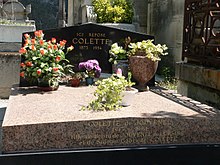
Today is the birthday of Alice Neel (Merion Square, Pennsylvania; January 28, 1900 – October 13, 1984 New YorkCity); visual artist, who was known for her portraits depicting friends, family, lovers, poets, artists, and strangers. Her paintings have an expressionistic use of line and color, psychological acumen, and emotional intensity. Her work depicts women through a female gaze, illustrating them as being consciously aware of the objectification by men and the demoralizing effects of the male gaze. Her work contradicts and challenges the traditional and objectified nude depictions of women by her male predecessors.[1] She pursued a career as a figurative painter during a period when abstraction was favored, and she did not begin to gain critical praise for her work until the 1960s. Neel was called “one of the greatest portrait artists of the 20th century” by Barry Walker, curator of modern and contemporary art at the Museum of Fine Arts, Houston, which organized a retrospective of her work in 2010.
Gallery
And today is the birthday of Jackson Pollock (Paul Jackson Pollock; January 28, 1912 – August 11, 1956); painter and a major figure in the abstract expressionist movement. He was widely noticed for his “drip technique” of pouring or splashing liquid household paint onto a horizontal surface, enabling him to view and paint his canvases from all angles. It was called all-over painting and action painting, since he covered the entire canvas and used the force of his whole body to paint, often in a frenetic dancing style. This extreme form of abstraction divided the critics: some praised the immediacy of the creation, while others derided the random effects.
Gallery
Mac Tag

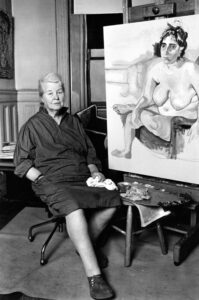
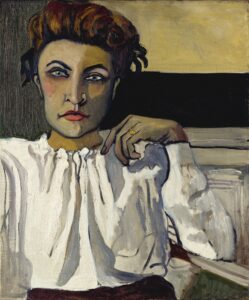
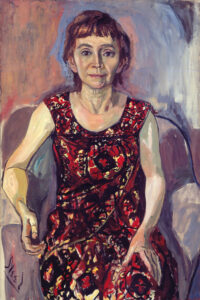
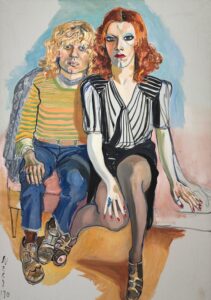



No Comments on "The Lovers’ Chronicle 28 January – affirmation – birth of Colette art by Alice Neel & Jackson Pollock"